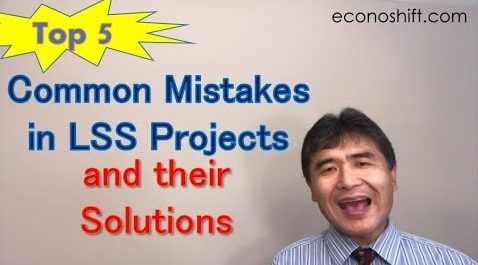Toyota’s Procurement Policy and the KEIRETSU Strategy
Toyota has established a “Purchasing Guideline Policy” consisting of 14 articles in 1937. We can learn Toyota’s purchasing policy from it’s Article 4 and Toyota’s “Growing Together” strategy AKA the KEIRETSU strategy.
(Duration: 7:05)
From Article 4 of Toyota’s “Purchasing Guideline Policy”
Hi, this is Mike Negami, Lean Sigma Black Belt.
We’ll start from this video request.
“Would you make a video about this question: How does Toyota select the suppliers and find the best?”
Ludwig, thank you very much for your request. I think that we’ll actually look at “How to nurture suppliers” rather than “How to select suppliers”.
Toyota is an automobile manufacturing company, but in fact it purchases most parts and assembles them. So, the price and quality of the finished products are largely dependent on the result of purchasing prices and quality.
In 1937, soon after Toyota was founded, incoming-President Kiichiro Toyoda made a “Purchasing Guideline Policy” consisting of 14 articles, and Toyota is continuing in that spirit even now. Since the answer to today’s question is in Article 4, I’ll talk about it.
<Article 4> “Pay special attention to selection of your suppliers. Always keep yourself open to many directions and study whether there are other excellent suppliers. As a general rule, you should have two suppliers for each part as much as possible. “
Quoted from 元トヨタマンの目:http://blog.livedoor.jp/aoki1162201/archives/51172436.html
(Translated by Mike Negami)
It’s very reasonable to have two suppliers for each part. If you have only one supplier, when they can’t supply the part, you would be in trouble. If you have two suppliers, you can always compare quality and cost among them.
Not having three or more suppliers is based on their belief, “Prosper Together” and the KEIRETSU strategy which we’ll discuss later. A good, long trust relationship with their suppliers gives Toyota high quality and success. Article 4 continues.
“However, in case of unavoidable circumstances, you can have one or three suppliers with your manager’s permission. If you have only one supplier, make effort to select the right supplier as soon as possible.”
Quoted from the same as above.
You can see that they try to ensure “Having two suppliers for each part” systematically. Article 4 continues.
“In the case of three or more suppliers, you’re allowed to decrease order quantities from suppliers with high prices and high defects, especially paying attention so as not to cause other existing suppliers trouble as much as you can.”
Quoted from the same as above.
Toyota has the highest reputation from parts manufactures.
This is a very rational procurement policy. I wonder, what do those parts manufacturers think about that?
A research firm in the US conducts a survey every year on parts manufacturers to see how they evaluate their automobile companies. Let’s see the result of the survey.
Quoted from: https://www.industryweek.com/supplier-relationships/gm-rising-nissan-falling-new-supplier-relations-survey
The result is called the ‘Supplier Working Relations Index’. The red line is Toyota. Honda had the top place in 2009 and 2010, but other than that, Toyota is always ranked first in the US.
What is the reason for that? Does Toyota buy parts for the highest price? That’s not true. Regarding prices, Toyota is one of the toughest purchasers. Let’s explore why their reputation with the parts manufacturers is so high.
We can learn the secret from this book, The Toyota Way by Jeffrey Liker that I’ve introduced in other videos. ⇒”What is the Toyota Production System? The big picture of TPS”
A Learn-and-Grow-Together Strategy, the KEIRETSU Strategy
“Toyota views new suppliers cautiously and gives them only very small orders. They must prove their sincerity and commitment to Toyota’s high-performance standards for quality, cost, and delivery. If they demonstrate this for early orders, they will get increasingly larger orders.”
Quoted from P202 of ‘The Toyota Way’ by Jeffrey Liker
Every company wants to reduce their purchasing costs, but if your customer suddenly changed their supplier from you to your competitor because of their cheap price, it’s painful to you. We cannot build a good trust relationship with a company that often does such practices. Toyota never do that. Conversely, they value their existing vendors very highly.
“All that Toyota could offer was the opportunity for all partners to grow the business together and mutually benefit in the long term. So, like the associates who work inside Toyota, suppliers became part of the extended family who grew and learned the Toyota Production System.”
Quoted from the same as above.
For example, Toyota has realized Just In Time, which is producing or procuring ‘the right items at the right time in the right amounts’ using the Kanban system. ⇒”JIT – Just In Time is different from the Kanban System 【Toyota Production System】”
The arrivals from parts manufacturers will be the start of Just In Time, but they cannot hold a lot of inventory there. Therefore, Toyota requires that their vendors not only have good price and high quality but also just-in-time delivery.
Delivery several times a day is common for them. For parts manufacturers, if they do such things as normal practice, there is no profit. This is a great point in Toyota. They send Toyota Production System experts to their vendors and conduct Kaizen projects, then help the vendors improve their processes to become profitable.
What’s even more amazing is that Toyota utilizes the experience of improvement activities with the vendors to improve themselves.
In this way, Toyota has been establishing good trust relationships with their partner companies, and has continued its strategy to learn and grow together since its founding.
From a Japanese word, we call the strategy, the ‘KEIRETSU’ Strategy.
“See these other popular articles.”















